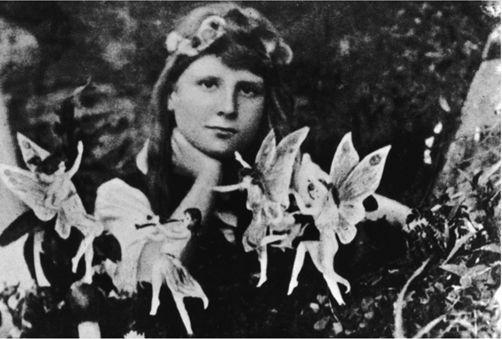The Sorcerer's Companion: A Guide to the Magical World of Harry Potter (29 page)
Read The Sorcerer's Companion: A Guide to the Magical World of Harry Potter Online
Authors: Allan Zola Kronzek,Elizabeth Kronzek

Today, no fairy is better known or loved than the Tooth Fairy. In the United States and parts of Great Britain, Canada, and Spain, she is said to visit in the night, leaving money or small gifts in return for “baby teeth” placed under a child’s pillow.
Although tales of the Tooth Fairy have only been around since the early twentieth century (and no one knows quite where they began), the association of teeth with treats is much older. More than a thousand years ago, Viking children received a “tooth fee”—a present of some kind—when their first tooth grew in. A more recent predecessor to the Tooth Fairy was the Tooth Mouse, a creature beloved by nineteenth-century European children, who placed their teeth inside mouse holes, under kitchen shelves, and anywhere else a mouse might find them. Not only did these lucky children receive candy or coins from the Tooth Mouse, but legend held that their new teeth would be as sharp as those of their tiny benefactor!
Not all fairies favor an idyllic life of leisure. Many folktales tell of household fairies—brownies, pixies, and some elves—who prefer living among humans and are glad to assist with chores in exchange for a nightly bowl of cream or a morsel of cake. Knowledge of fairy etiquette is essential to anyone who lives with the little people, since they are easily offended. If you fail to keep your hearth clean or try to pay your fairies for their services, they may express their displeasure by overturning garbage pails, smashing dishes, or causing the cow to go dry. Such temper tantrums are best overlooked, however, since—then, as now—good help is hard to find.

In July 1918, two young girls from rural Cottingley, England, produced what appeared to be the world’s first photograph of actual fairies. The picture, taken by sixteen-year-old Elsie Wright, showed her cousin, Frances Griffiths, sitting in the forest with several tiny, winged people flitting about her. Elsie’s father, who developed the film, did not believe in fairies and told the girls so, suggesting gently that they had staged the scene. But the girls insisted that they had seen fairies in the woods many times. A month later, they produced a second picture, this time of Elsie posing with a gnome.
Elsie’s father remained skeptical, but her mother mentioned the pictures to friends who had an interest in the supernatural. From there the story spread quickly, ultimately coming to the attention of one of the most famous writers of the era—Sir Arthur Conan Doyle, creator of the great detective Sherlock Holmes. Fascinated by the possibility that fairies were real, Doyle and other interested parties consulted a variety of experts to find out if the photographs had been faked. Although some commented that the fairies’ hairstyles looked too “modern,” no one could produce conclusive evidence of fraud. In December 1919, Doyle published an article in the
Strand
magazine entitled “Fairies Photographed—An Epoch-Making Event,” which met with tremendous excitement from believers, as well as brutal criticism from skeptics. Further fuel was added to the fire when, in 1920, the girls took three more fairy photographs.
The debate over the authenticity of the Cottingley fairies raged for the next several decades. At last, in the early 1980s, both Elsie and Frances admitted that the pictures were a hoax. They had constructed the fairies out of paper and used hatpins to secure them to tree branches or to the ground. Frances remembered being shocked that anyone had believed their stories. After all, she pointed out, the pins were visible in some of the pictures—yet somehow no one noticed.
Frances Griffiths and her fairy friends, photographed by her cousin Elsie Wright in 1918. It was not until the 1980s that the cousins admitted they had perpetrated a hoax
. (
photo credit 24.2
)






